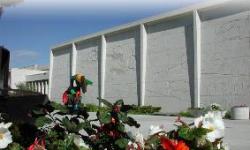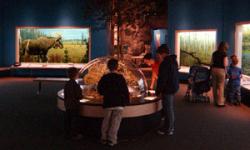The Royal Alberta Museum in Edmonton, Canada, opened to the public on December 6, 1967 under its original name, The Provincial Museum of Alberta. This achievement was the result of a partnership between the federal government’s Confederation Memorial Centennial Program and the Government of Alberta. Planning had begun in the 1950s, but a Museum professional was not hired to guide the project until 1962. In 1964, federal funding and matching provincial funds were announced. Raymond O. Harrison, an Australian, was hired and given $5M and three years to find a site, hire staff, build collections, construct a Museum and prepare exhibits to fill 4000 square metres.
On the Royal Alberta Museum’s opening day, visitors were introduced to three main floor galleries: Fur Trade, Native Peoples of Alberta, and early photographs of Aboriginal people taken by Ernest Brown and Harry Pollard. Eleven mammals were mounted in the habitat section and several scale models of future dioramas were prepared. Second-floor galleries focused on Agriculture, Pioneer Life and Industry and Commerce. Faced with Tyndall Stone from Manitoba and incorporating native petroglyph designs in its façade, the building is an icon of a specific period in Alberta architecture.
John Weaver created two heroic-sized sculpture groups to introduce the two curatorial wings of the Royal Alberta Museum, Human History and Natural History:
The Royal Alberta Museum expanded continuously through the late 1960s and 1970s, adding a range of curatorial programs and staff. A new Conservative government and a surging Alberta economy increased revenue spending on government projects. This benefited the development of the Museum’s superb habitat dioramas. Major exhibits were added to the Museum at the rate of about one a year until 1979.
In 1969, the Royal Alberta Museum was instrumental in establishing the Museum Advisory Program that later became Museums Alberta, an association that fosters the development of Museums in Alberta. A Travelling Exhibits Program was established at the Museum to prepare exhibits to travel locally, provincially and nationally. This program was a highly fertile training ground for Museum artists and designers. A highlight of the Travelling Exhibits Program was the acquisition of a series of tractor-trailers that were outfitted to serve as a Museum caravan, bringing exhibits to communities throughout the province for more than 10 years.



Royal Alberta Museum reviews
Login to comment